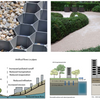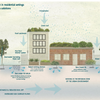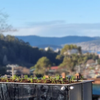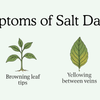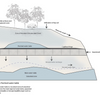How low can you go? Water usage and wicking beds
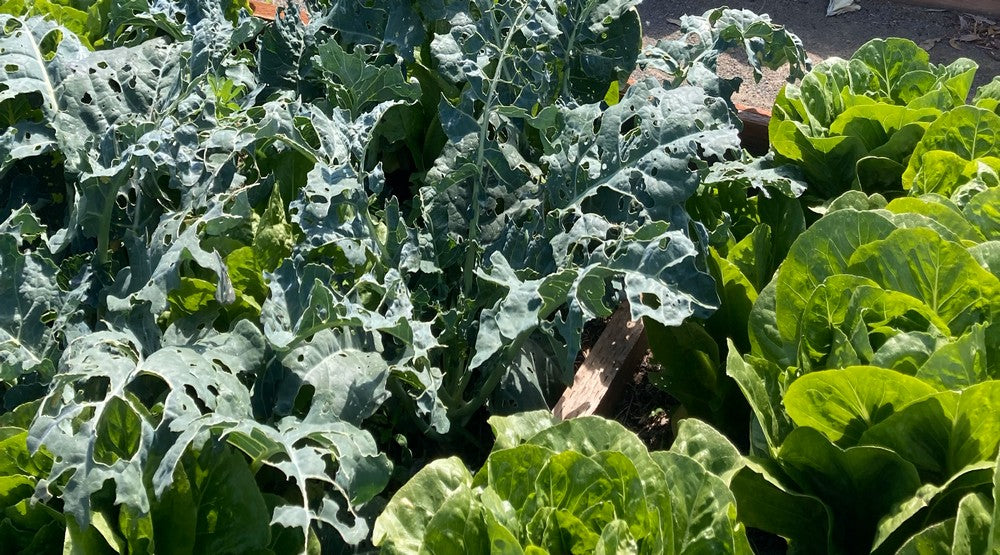
Posted on: 29 June 2019 by Ian Collins
In this article we explore the water savings of wicking beds as discovered through field trials conducted in Sydney during 2018.
Australia may be the ‘Lucky Country”, but it is also the driest continent on planet earth. Australia is experiencing intense climate change that will affect every inhabitant as our precious water resources are impacted by the ‘irregular and unreliable’ rainfalls.
This is not just a problem for our farmers, but also has implications for all of us on an individual level. As global citizens, we must make positive changes by educating ourselves with the knowledge of how much water we are actually using, and by creating awareness of where we can save the most water per person each day.
Per capita water consumption in Australia averages 340 litres per day, according to the Riverina Water County Council1 . This annual daily consumption, however, varies across the continent, with coastal areas using as little as 100 litres and some dry inland areas using more than 800 litres per person. See Sydney Water for an overview.
Many councils in Australia have introduced water restrictions in a bid to reduce water usage. Education and the increased awareness of the community in a number of different cities across our vast land has had some major positive impacts on water usage.
Melbourne has a program called “Target 155” (litres/person/day) and their current consumption is down to 133 litres, whereas Sydney uses on average 200 litres/person/day.
Education has been very important and bodies like Smart Approved WaterMark have been particularly successful in this area.2
An important part of this education process around water usage has been around identifying where we use our water and how we can save on usage without significantly compromising our lifestyles.
Riverina Water County Council has identified that 50% of water usage in Australia is in the residential gardens – refer chart below. This means that on average Australians use 170 litres per day in watering their garden! This is more than 3 times the amount required per day to meet one person’s basic water needs.3
So, reducing our garden water usage is critical to saving on water generally. It is also a key component of council imposed water restrictions.
Imagine saving 80% of that garden water with a water saving technology.
Water Usage Trial
Exploring the Water Savings of Wicking Beds
Peter Rutherford, a Senior Ecologist at Kimbriki Eco Village and Garden Education Centre in Terry Hills conducted a water usage comparison trial of WaterUps® wicking beds and conventional garden beds. The trials were conducted from mid September to mid November 2018. The research results are summarised below.4
Comparing the water usage per week, the WaterUps® 1.2m x 2.4m raised wicking bed used 347.6 litres less water than the conventional bed. This is an 80% reduction in water consumption over the same period — highlighting the massive water savings of wicking beds.
If we extrapolate these research results, a 5,000 litre rainwater tank used to fill the WaterUps® wicking bed and water the conventional garden bed (as per trial conditions) would yield the following results.
Below we have used the trial results to model some total relative water usage numbers.
For a School or Community Garden that has 20 beds of 1.2m x 2.4m, the comparison of the usage of water are as follows.
In water savings alone this represents over 300,000 litres per year.
This is compelling data for the water savings of WaterUps® wicking beds.
Footnotes:
1. This website page has been removed by the Riverina City Council in July 2022.
2. https://www.smartwatermark.org
3. http://www.learnz.org.nz/water172/bg-standard-f/water-use
4. WaterUps Usage Trial Report.
5. Rainwater tank image courtesy of Select Watertanks, Queensland www.selectwatertanks.com.au




